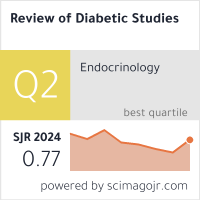Barriers And Limitations For Undergoing Mammography Screenings Among Women Attending Primary Health Care Centers
DOI:
https://doi.org/10.70082/rjfmz623Abstract
Background: Breast cancer is a leading global health concern for women, with early detection through mammography screening proven to significantly reduce mortality. However, many women do not adhere to screening recommendations due to a complex array of barriers. This study aimed to identify and analyze the barriers and limitations to undergoing mammography screenings among women attending primary healthcare centers.
Methods: A descriptive cross-sectional study was conducted among 300 women aged 40 years and above attending primary healthcare centers. Data were collected using a structured, self-administered questionnaire that assessed sociodemographic characteristics, knowledge, attitudes, and perceived barriers. The questionnaire demonstrated high internal consistency (Cronbach's alpha = 0.87). Data were analyzed using SPSS version 26, employing descriptive statistics and chi-square tests, with a p-value of <0.05 considered statistically significant.
Results: The majority of participants were married (76%), unemployed (62.7%), and had a low monthly income (52.0%). While 69.3% had heard of mammography, only 58.0% knew it was for early cancer detection, and less than half (47.3%) knew the correct recommended starting age. Prominent barriers included long waiting times (66.0%), fear of pain or radiation (62.7%), lack of time due to responsibilities (60.7%), and embarrassment related to male technicians (57.3%). A strong positive association was found between educational level and screening uptake (p < 0.001), with 63.0% of university-educated women having undergone mammography compared to 24.3% of those with primary education or less. Crucially, 79.3% of women stated they would undergo screening if advised by their physician.
Conclusion: The study reveals that women face multifaceted barriers to mammography screening, spanning psychological, cultural, economic, and systemic domains. Despite moderate general awareness, gaps in accurate knowledge and significant attitudinal and access barriers persist. Educational attainment and physician recommendation are key influencers of participation. Interventions to improve screening rates should be holistic, focusing on enhancing health literacy, ensuring gender-sensitive services, improving accessibility, reducing costs, and actively engaging healthcare providers in recommending screening.
Downloads
Published
Issue
Section
License

This work is licensed under a Creative Commons Attribution-ShareAlike 4.0 International License.


